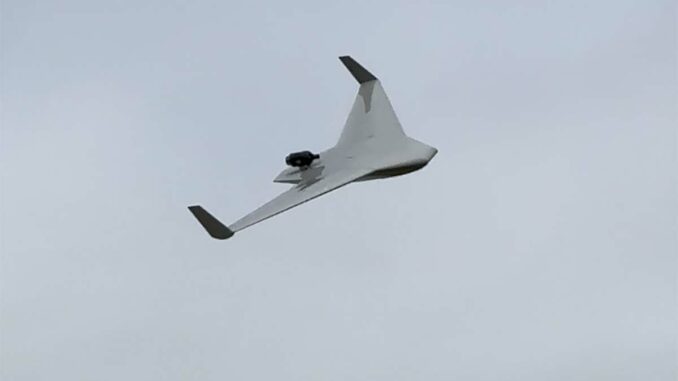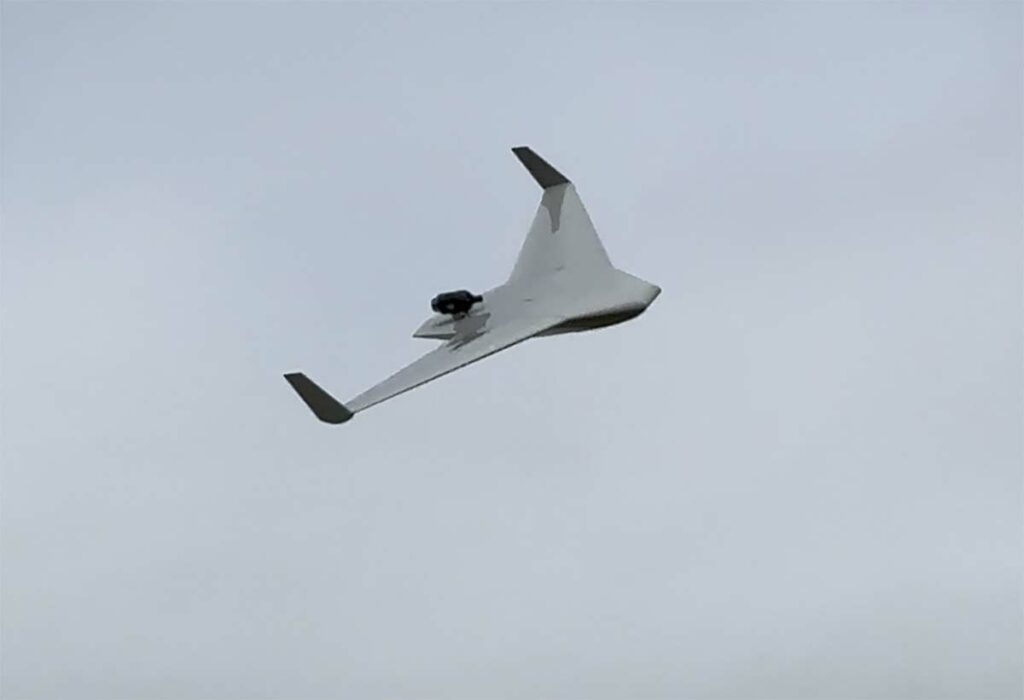
France unveils its first combat UAV, the Veloce 330, capable of attacking targets with precision. Technical analysis and strategic implications.
In brief
France has revealed its first locally-manufactured combat UAV, the Veloce 330. Powered by a jet, this drone can reach 400 km/h and perform vertical take-offs and landings. With an autonomy of 60 minutes and a range of 50 km for combat missions, it can carry an explosive charge of 2 to 3 kg. The Veloce 330 is also capable of surveillance missions, with a range of 80 km and an autonomy of three hours. This development marks an important milestone for the French defense industry.
France recently unveiled the Veloce 330, an innovative, locally-manufactured combat UAV. This UAV represents a significant advance in France’s defense capabilities, offering sophisticated combat and surveillance functionalities. This article examines the technical features of the Veloce 330, its advantages and disadvantages, and the strategic implications of its deployment.
Technical specifications of the Veloce 330
Description and Capabilities
The Veloce 330 is a jet-propelled drone capable of vertical take-off and landing (VTOL). It can reach a maximum speed of 400 km/h and stay airborne for 60 minutes when used for combat missions. For surveillance missions, it can fly for up to three hours with a range of 80 km.
Navigation and detection systems
Equipped with a jamming-resistant navigation system, the Veloce 330 uses sophisticated sensors to detect targets. It can identify a moving vehicle up to 15 km away during the day and 3 km at night. This advanced detection capability enables precise surveillance and targeting.
Explosive charge
The drone can carry an explosive charge of 2 to 3 kg, powerful enough to damage or destroy armored vehicles. This capability makes it particularly effective for targeted attacks on military infrastructure or enemy convoys.
Advantages of the Veloce 330
Flexibility and mobility
The Veloce 330, with its VTOL capability, offers great operational flexibility. It can be rapidly deployed in difficult-to-access areas without the need for an airstrip, a major asset for military operations in varied terrain.
Precision and efficiency
Thanks to its advanced detection and navigation systems, the Veloce 330 offers exceptional precision in targeting and attack. This reduces the risk of collateral damage and enhances the effectiveness of military missions. For example, during reconnaissance missions, the drone can identify and track specific targets, transmitting real-time data to operators.
Concrete example
In 2023, the French army used the Veloce 330 in a combat simulation, demonstrating its ability to neutralize enemy armored vehicles with remarkable precision. This demonstrated the drone’s effectiveness in real-life combat scenarios.

Disadvantages and challenges of the Veloce 330
High cost
The manufacturing cost of a Veloce 330 is estimated at over 200,000 euros, making it relatively expensive compared with other combat drones available on the market. This high cost could limit the number of UAVs that the French army can acquire and deploy.
Vulnerability to electronic countermeasures
Although the Veloce 330 is equipped with jamming-resistant navigation systems, it remains vulnerable to sophisticated electronic countermeasures. Enemies equipped with advanced technologies could potentially disrupt the drone’s operations, limiting its effectiveness on the battlefield.
Service life and maintenance
Like all advanced military equipment, the Veloce 330 requires regular and rigorous maintenance to ensure its smooth operation. Maintenance costs, as well as the need for specific spare parts, can represent a long-term logistical and financial challenge.
Strategic consequences of Veloce 330 deployment
Strengthening defense capabilities
The deployment of the Veloce 330 could significantly enhance France’s defense capabilities, providing a valuable tool for surveillance and targeted attack missions. Its ability to operate autonomously and provide real-time intelligence would enhance the responsiveness and effectiveness of France’s armed forces.
Impact on military tactics
Integrating the Veloce 330 into the French military arsenal could change military tactics, favoring the use of drones for precise reconnaissance and attack missions. This could reduce dependence on ground troops and minimize risks to soldiers.
International implications
By developing and deploying advanced combat UAVs like the Veloce 330, France could reinforce its position on the international stage as a technological leader in defense. It could also encourage other nations to invest in similar technologies, increasing competitiveness and collaboration in the defense field.
The Veloce 330 represents a major breakthrough for the French defense industry, offering advanced combat and surveillance capabilities. While it offers significant advantages in terms of flexibility, precision and efficiency, it also poses challenges in terms of cost, vulnerability and maintenance. The integration of this drone into the French armed forces could transform military tactics and strengthen France’s position on the international stage. Continued innovation and development in this field will be crucial to maintaining this strategic and technological advantage.
War Wings Daily is an independant magazine.